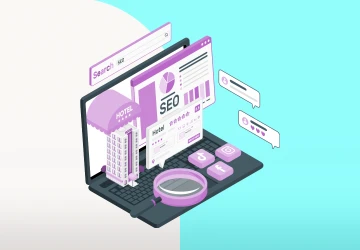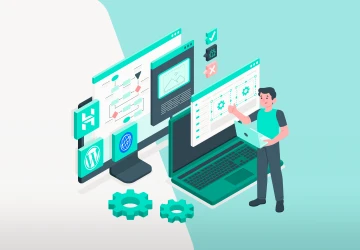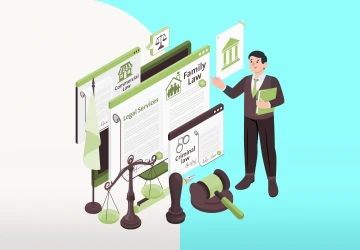Multi-Language Hospitality Websites: More Guests, More Bookings, Less Hassle
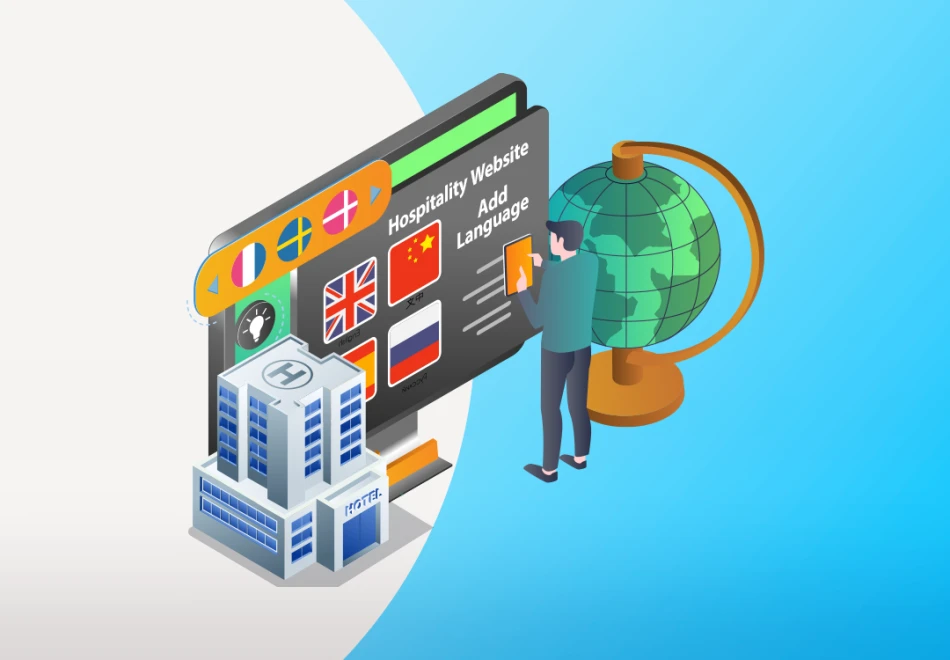
Having multilingual hotel websites isn’t just a nice extra anymore—it’s a must if you want to keep up in today’s travel world.
With so many international tourists exploring new places, a site that only speaks one language just won’t cut it.
Travelers want to feel welcome from the second they land on your page, and offering their language makes a huge difference.
In this guide, I’ll show you how to create multilingual hotel websites that truly speak to your guests.
We’ll cover how to attract more international tourists, expand your global reach, and make simple changes that leave a big impact.
Why Should Hospitality Brands Go Multilingual?
1. Reach a Global Audience
Multilingual hotel websites aren’t just a nice touch—they’re a powerful way to say “you’re welcome here” to the world.
When your hotel speaks more than one language, you’re not just translating words—you’re opening doors.
Suddenly, your property feels accessible to international tourists who might’ve skipped past an English-only site.
And honestly, who wants to guess their way through booking a room?
Here’s the thing: Most travelers would rather read about your hotel in their native language, even if it’s not a perfect translation.
Studies show almost two-thirds of people prefer it that way.
And they want reviews in their language, too.
That’s a big slice of guests you might be missing without a multilingual hotel website.
Even better?
Search engines love it.
With language-specific pages, your site is more likely to pop up when someone types “beachfront hotel in Dubai” in French, Japanese, or Spanish.
That’s your global reach in action—bringing your brand into new markets without needing a physical expansion.
2. Enhance the Guest Journey
Great trips start with smooth planning, and multilingual hotel websites make that magic happen from the very first click.
Picture this: A traveler from Brazil lands on your site.
They’re excited, curious, maybe even ready to book.
But the entire page is in English, and suddenly, that excitement turns into confusion.
What’s included in the rate? Is breakfast extra? What does “non-refundable” really mean?
Now flip the script.
They switch the site to Portuguese and—bam—everything clicks into place.
That’s the power of speaking your guest’s language.
It turns a maze into a map.
International tourists are far more likely to complete their booking when they understand what they're booking.
No confusion. No second-guessing.
Just a clear, confident path to your front door.
And it’s not just about clarity—it’s about comfort.
Language isn’t just a tool; it’s an invitation.
When guests feel like your hotel “gets” them, they start trusting you before they’ve even arrived.
That trust pays off in direct bookings and glowing reviews.
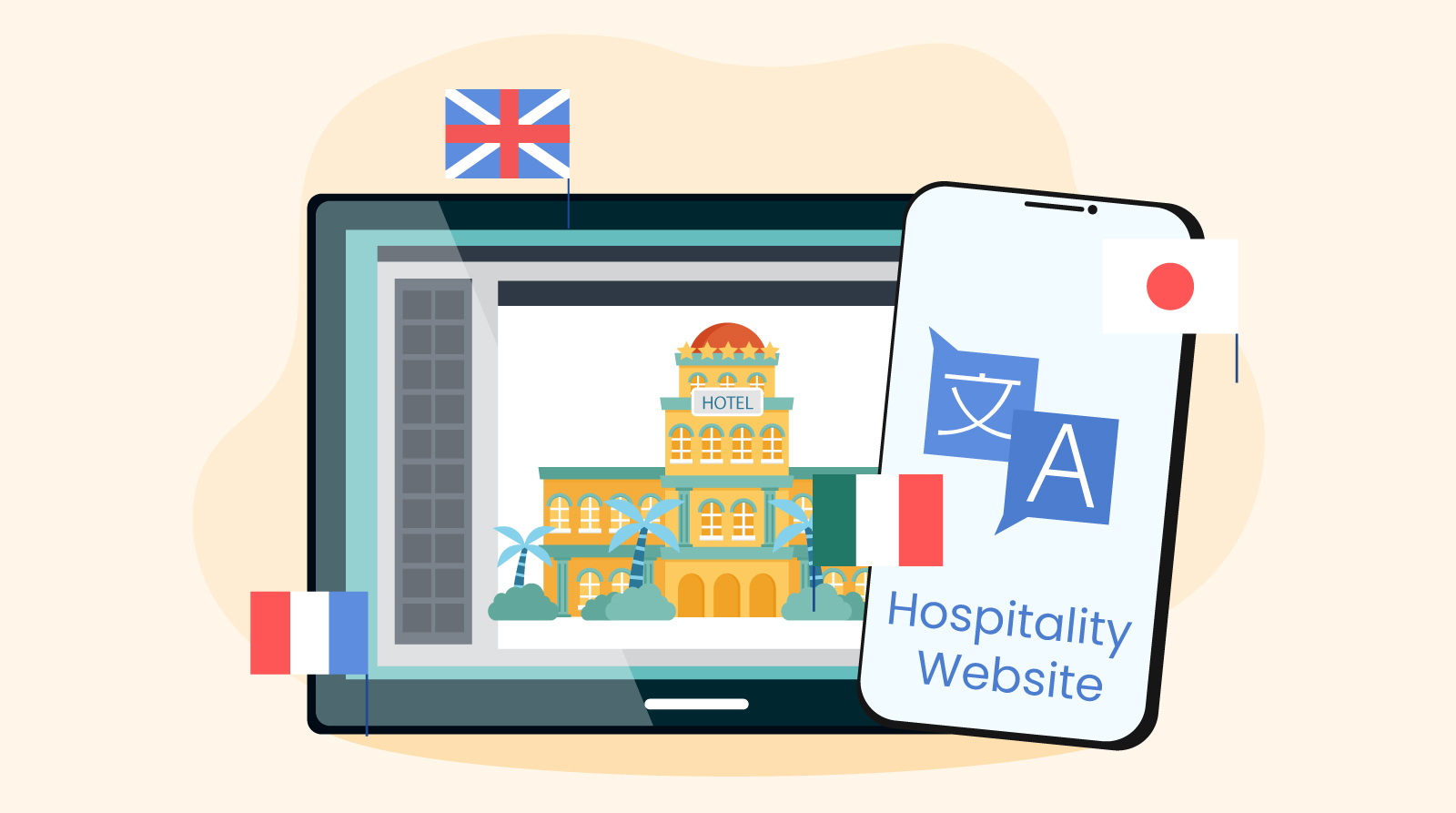
3. Strengthen Trust and Brand Reputation
Let’s be honest—first impressions aren’t just important, they’re everything.
And in hospitality, your website is the handshake before the stay.
Multilingual hotel websites send a powerful message right out of the gate: “We see you. We’re ready for you. You belong here.”
When international tourists land on a site that speaks their language, it immediately feels more personal, more professional, and a whole lot more trustworthy.
It tells them that you’re not just chasing bookings—you care about their experience, from the first click to the final checkout.
Everything becomes easier: Understanding your check-in times, navigating your amenities, or even knowing how to cancel a reservation.
There’s no confusion or digging through fine print.
Just clarity in a language they’re comfortable with.
That clarity builds confidence.
And confidence builds bookings.
In a crowded market full of flashy photos and empty promises, multilingual hotel websites stand out by offering something simple but rare: Global reach paired with local understanding.
It’s the kind of detail that says, “We’ve thought of everything, including you.”
4. Drive More Direct Reservations
Booking a hotel shouldn’t feel like a game of guessing.
But when international tourists land on a website that doesn’t speak their language, that’s exactly what it feels like—confusing and frustrating.
But here’s the magic: multilingual hotel websites clear up that confusion.
The moment travelers can browse your site in their language, they’re not just reading your room descriptions—they’re feeling understood.
They can check out your policies, explore special offers, and understand your terms with complete confidence.
This clarity does more than just build trust—it motivates action.
When guests can fully navigate your website without any language barriers, they’re far more likely to skip the third-party platforms and book directly with you.
No middlemen, no hidden fees—just a smooth and seamless booking experience.
Why does this matter? Because direct bookings give you more control over your guest relationships, your brand, and your bottom line.
Plus, every time someone books directly with you, you're cutting out those expensive commission fees that third-party sites charge.
It’s a win-win!
Think of it this way: When multilingual hotel websites are in play, you’re not just filling rooms—you’re creating a guest experience that starts long before they check in.
How to Translate Your Hospitality Website Effectively?
1. Prioritize Key Languages for Your Audience
You can’t just guess when it comes to picking which languages to focus on.
It’s not about picking one randomly—it’s about making smart choices.
Start by looking at your booking data.
Where are your guests coming from? Are countries like Germany, Spain, or China bringing in a lot of traffic?
These are the ones to consider for translation.
But it doesn’t stop there.
You also need to think about English proficiency.
In places like Europe or parts of Asia, English is often understood, but not always at a fluent level.
An English-only website might work for some, but if you offer it in their native language, it’s going to make the whole experience smoother and more welcoming, which can lead to more conversions.
You can also use tools like Lighthouse to get a clearer picture of which countries are showing more interest in your destination.
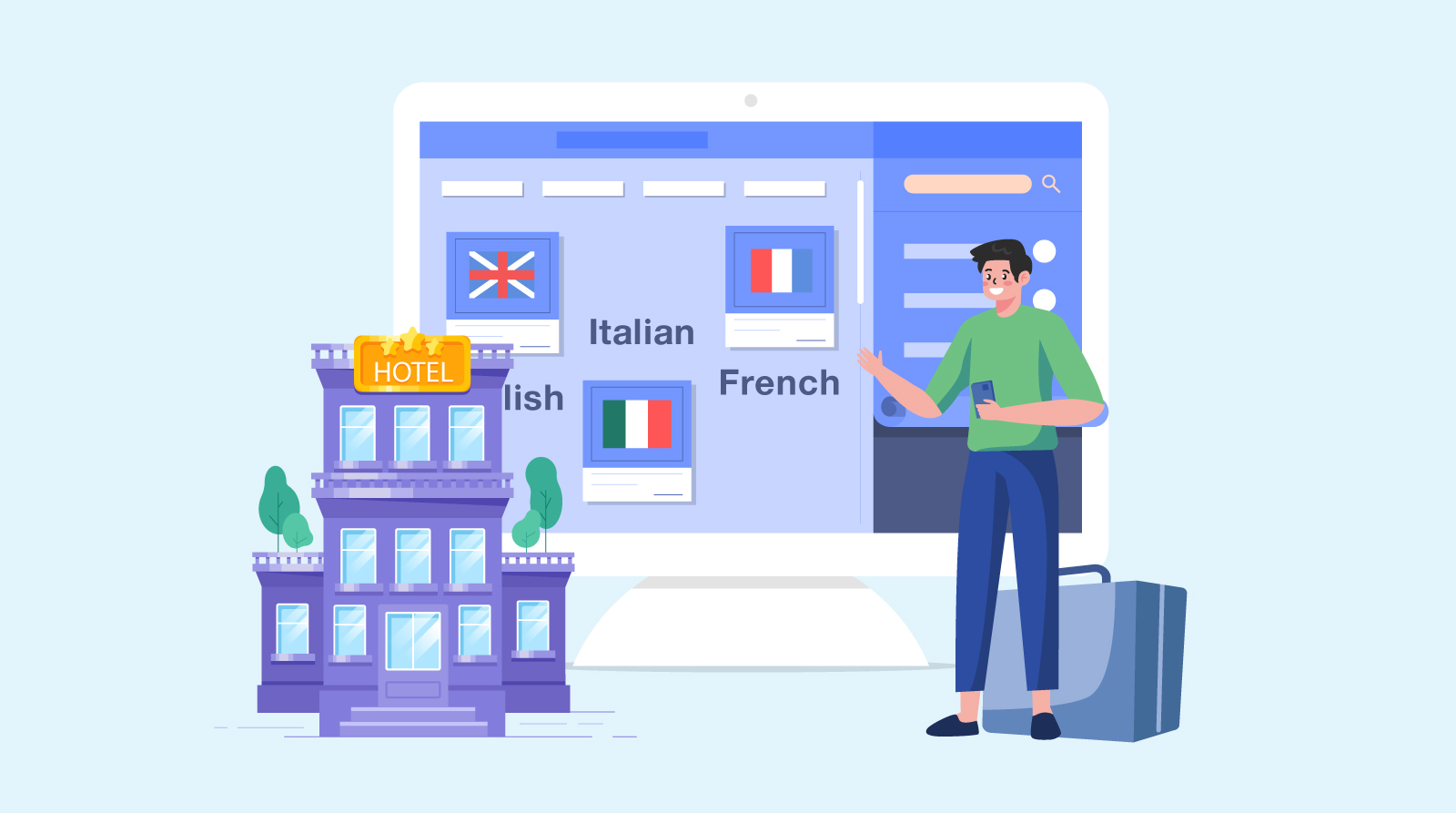
2. Leverage Smart Translation Tools
Since there are a lot of translation options out there, it’s important to choose the one that works best for your hospitality website.
You’ve got a few routes you can take: Manual translation, automated translation, or a hybrid approach.
Manual translation guarantees high-quality, culturally relevant content, but it comes with a higher price tag and takes time.
It’s perfect for content that needs precision and a personal touch, like your brand message or key service details.
On the other hand, automated translation is faster and much more budget-friendly.
But, here’s the catch: It’s not always the best when dealing with complex or technical language.
For example, translating booking policies or legal terms might not give you the best results.
A hybrid approach blends both methods.
You can use automated tools for large amounts of text (like blog posts or general info) and then have a translator review or refine the important parts, like your booking process or pricing details.
This gives you a nice balance of speed, cost savings, and quality control.
Here are a few translation tools to help you get started:
Google Translate: It’s quick, free, and great for bulk translations, but you might need to clean up some of the results.
DeepL: This tool is known for its accuracy, especially for European languages, and offers both free and paid versions.
WPML: A paid plugin for WordPress sites, designed to make translating your site smooth and straightforward.
Translate.com: A tool that offers both automated and human translation options, with free and paid versions available.
3. Add Easy Language Switch Options
Offering your visitors the freedom to choose their language isn’t just a nice-to-have—it’s the secret ingredient to a smoother, more welcoming experience.
Think of it as rolling out the red carpet for every guest, no matter where they’re from.
When people can switch to their native language with a click, it’s like saying, “We get you.”
This simple feature removes any roadblocks, builds instant trust, and invites them to explore your site more freely.
The longer they stay, the more likely they are to book a stay.
Want to make the experience even more seamless?
Consider using geo-targeting.
It’s like having a personal concierge for every visitor—detecting where they are and automatically serving up the website in the right language.
From the moment they land on your page, you’re speaking their language, so no guesswork is required.
The good news is, setting up language switching isn’t as complicated as it sounds.
If you're using a content management system like WordPress, tools like WPML or Polylang make it a breeze.
Platforms like Wix and Alweb.ai have language options built right in, too.
Just place the language selector where it’s easy to spot—like in the header or footer—and visitors will thank you for the convenience.
4. Optimize SEO for Every Language Version
Multilingual hotel websites rely on good SEO to get noticed by international tourists, so let’s keep it simple.
SEO—short for Search Engine Optimization—is just a way to help your site show up higher in search results.
The higher you rank, the more guests discover you.
When you add new languages, you can’t just copy and paste your English keywords.
You need to think about how people search in each region.
That means:
Local Keywords: Find the words travelers use in their language.
Meta Descriptions: Write short summaries that match local search phrases.
Alt Text for Images: Describe your photos with terms locals would type.
Imagine someone in Paris searches for “hôtel de charme Lyon,” while a visitor in Barcelona might type “hotel boutique Lyon.”
Both are about the same thing, but the wording is different.
And on top of that, an American might look for “boutique hotel,” whereas a British guest might search for “boutique accommodation.”
Making these tweaks helps you speak your guests’ language and rank higher in their searches.
Don’t stop at words, though.
Think about culture, too.
Use local expressions, examples, and tone so your content feels natural.
By doing this, you’ll boost your global reach and connect with more international tourists.
5. Reflect Cultural Sensitivities and Local Norms
Translation isn’t just about turning words from one language into another—it’s about ensuring your multilingual hotel website feels like home to every visitor, no matter where they’re from.
When international tourists visit your site, the images, colors, and messages you use should align with their cultural expectations and preferences.
This makes your site feel more personal and welcoming, helping you reach a wider audience.
Cultural relevance is the secret ingredient that makes a good website stand out.
For instance, a photo of a beach party might excite visitors from Brazil, but it might not click with guests from Japan.
And a fun phrase that works in one language could confuse or even offend someone from a different culture.
So, how can you adapt?
Here’s what to think about:
Imagery: Pick photos that reflect the culture or scenery your visitors know and love.
Colors: Colors can have different meanings—while red is lucky in China, it could mean danger in some places.
Messaging: Avoid idioms or jokes that don’t translate well. Instead, use ones that your audience will understand and connect with.
6. Test the User Experience Across Languages
Once you’ve translated your multilingual hotel website, it’s time to make sure everything works smoothly in every language.
Testing is a crucial step to ensure that your site isn’t just functional—it’s also user-friendly for guests from all over the world.
Here’s what you need to check:
Navigation: Make sure that users can easily find their way around your site in every language. The menu, links, and buttons should be just as easy to navigate as they are in your original language.
Translations: Double-check that your translations are accurate and make sense in the context. You don’t want phrases that sound off or confusing to your visitors.
Booking Systems and Forms: Test your booking systems, reservation forms, and payment gateways in each language. Everything should work perfectly, from selecting room types to entering payment details, ensuring that no barriers exist to completing a reservation.
What Are the Top Benefits of a Multilingual Hospitality Website?
1. Boosted Conversion Rates
When your site speaks your guests’ language, you break down a huge barrier.
Visitors can read room details, rates, and booking steps in words that feel natural to them.
That clarity builds trust and keeps them from bouncing off your site in confusion.
Put simply, the clearer your info, the more “Yes!” clicks you get.
Instead of giving up halfway, people slide right through to “Reserve Now.”
2. Happier, More Satisfied Guests
Imagine walking into a hotel where everything feels familiar—from the greeting at the door to the menus on the table.
Now, that’s the kind of experience a multilingual website offers.
When your international visitors land on your page and find everything in their language, it’s like you’re already making them feel at home before they even arrive.
It’s not just about translating words—it’s about creating an experience where guests feel seen and valued.
That effort to speak their language goes beyond convenience; it shows that you truly care about their comfort.
And guess what?
When guests feel this level of personal attention, they don’t just book—they rave about their experience, come back for more, and tell their friends.
The result?
More positive reviews, more repeat business, and a growing base of loyal customers who trust your brand.
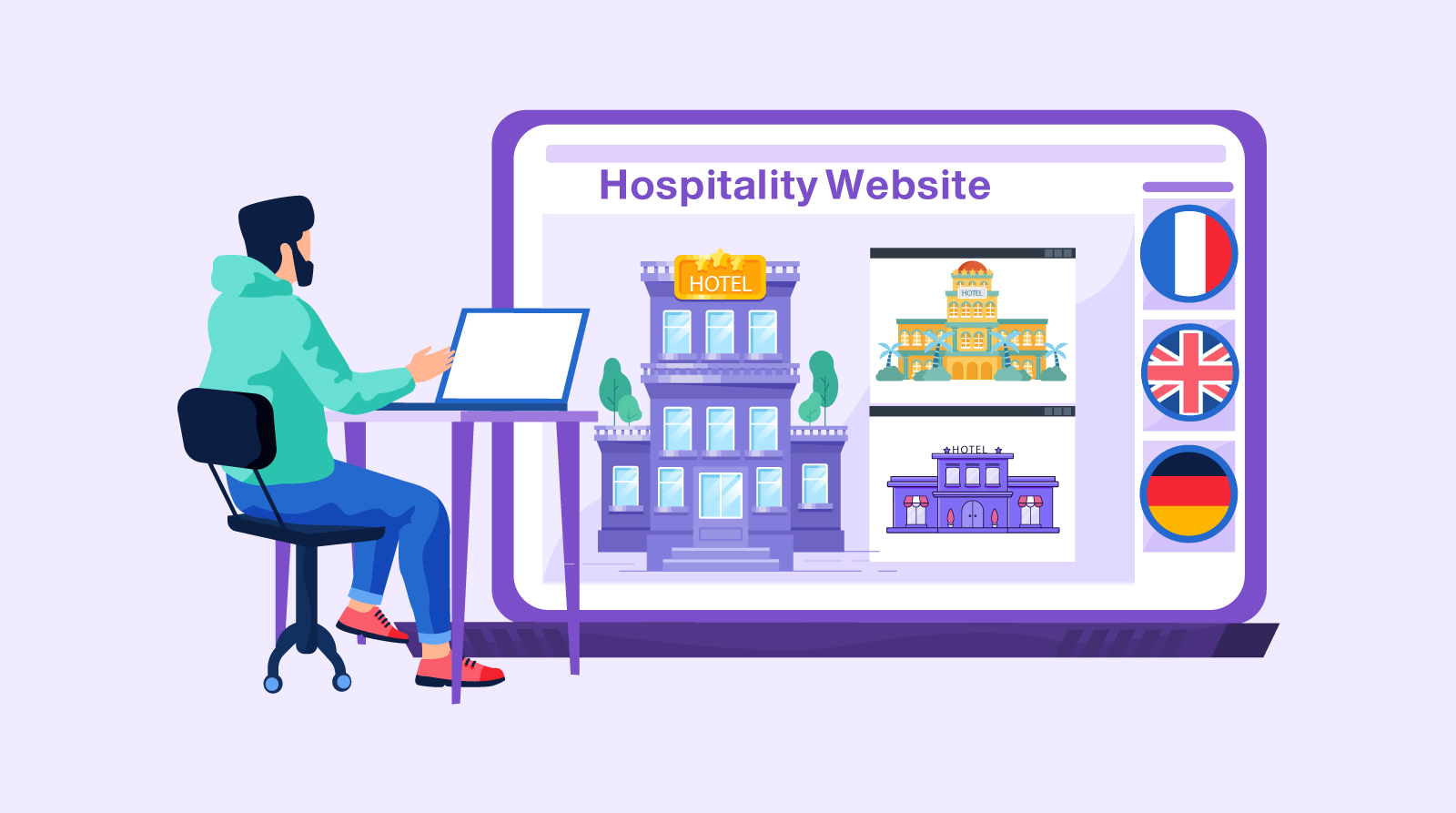
3. A Stronger Edge Over Competitors
In today’s competitive hospitality market, standing out can be tough.
Everyone’s vying for attention, and visitors have plenty of options to choose from.
But here’s where a multilingual website gives you a major advantage.
While many competitors stick to just one language, offering your site in multiple languages is like offering a VIP experience to international guests before they even set foot on your property.
A well-designed multilingual website shows that you’re ready to cater to a global audience and that you’re serious about providing an exceptional experience for guests from different backgrounds.
It sets you apart from others who might be missing out on attracting travelers who speak different languages.
FAQs
What Is the Best Website Builder for Multiple Languages?
Wix, WordPress with WPML, and Alweb.ai are top choices for building multilingual sites. They offer easy language management and translation tools.
Which Language Is Best for the Hospitality Industry?
English is the global standard, but Spanish, Mandarin, French, and German are also key. It depends on where your main guests come from.
How to Have a Website in Multiple Languages?
Use a multilingual plugin, build language-specific pages, or choose a builder with built-in translation tools. Always localize, not just translate.
What Website Has Many Languages?
Major brands like Booking.com and Airbnb offer websites in 30+ languages. They tailor content for different cultures and regions.
Final Thoughts
As promised, we’ve covered why multilingual hotel websites are key to reaching more international tourists and expanding your global reach.
Remember, true success isn’t just about translation—it’s about creating a localized, welcoming experience that feels natural to every guest.
Always test your site from the visitor’s perspective: Can they navigate easily, feel at home, and trust what they see?
If not, it’s time to adjust.
Need help building a multilingual site that truly connects with travelers?
Reach out to us today—we're ready to help you turn clicks into full bookings worldwide.

